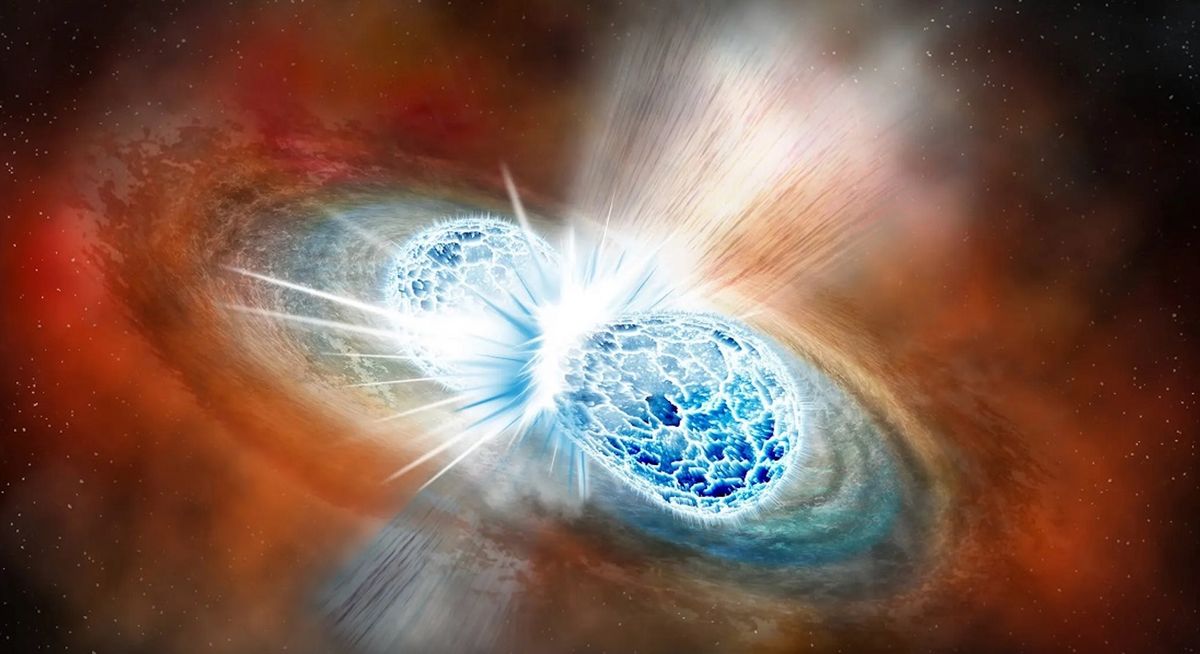Scientists have discovered that if a neutron star collision occurred near Earth, it could have devastating effects on our planet. However, the collision would have to be within approximately 36 light-years of Earth to cause an extinction-level event. The team of scientists, led by Haille Perkins from the University of Illinois Urbana-Champaign, explained that neutron star collisions produce kilonovas, which are incredibly violent and powerful events in the universe. Neutron stars are the collapsed remnants of dead stars and are incredibly dense. In fact, if a teaspoon of a neutron star was brought to Earth, it would weigh approximately 10 million tons. Not only do these collisions create bursts of gamma rays and cosmic rays, but they also produce environments that forge elements heavier than lead. These elements cannot be created under other conditions. Additionally, neutron star mergers generate gravitational waves that can be detected on Earth. Perkins explained that neutron stars can exist in binary systems, and when they merge, it creates a rare and spectacular event.
The research conducted by the team was based on observations of a neutron star merger detected by the Laser Interferometer Gravitational-Wave Observatory (LIGO) in 2017. This merger was the only one observed so far in both electromagnetic radiation and gravitational waves, making it an ideal event to study. One of the most threatening aspects of neutron star mergers is the gamma rays they produce. These gamma rays have enough energy to ionize atoms, potentially destroying the Earth’s ozone layer and exposing the planet to lethal doses of ultraviolet radiation from the sun. Perkins and her colleagues determined that the gamma rays from neutron star mergers would have a range of about 297 light-years, meaning that anything within that range would be affected. However, the impact of these gamma rays is limited to a narrow path, so a direct hit from a gamma-ray jet would be necessary for dramatic effects. Another concern is the “off-axis” gamma-ray cocoon, which would affect the ozone layer within about 13 light-years of its path, taking four years to recover. This would leave the Earth exposed to harmful ultraviolet light for nearly half a decade.
In addition to gamma rays, neutron star mergers also produce X-ray emissions called the X-ray afterglow. These X-ray emissions can potentially ionize the ozone layer, posing significant risks. However, the Earth would need to be within a distance of 16.3 light-years for this afterglow to be a threat. The most dangerous effect of neutron star mergers, according to the research team, comes from highly energetic charged particles known as cosmic rays. These particles would spread outward from the event’s epicenter, stripping the ozone layer and leaving the planet vulnerable to ultraviolet radiation for thousands of years. This would have an extinction-level impact, even if the Earth were 36 light-years away from the event. However, Perkins emphasized that the specific distance and the most dangerous component are uncertain and depend on various factors.
Despite these potential risks, Perkins assured that neutron star mergers are extremely rare and should not be a concern for people on Earth. Other events such as solar flares, asteroid impacts, and supernova explosions are more likely to be harmful and have already been associated with mass extinction events on Earth. However, this research is valuable in understanding the conditions necessary to support life elsewhere in the universe. The study suggests that kilonovas could have similar lethality to supernovas but are much less common, making them less of a threat in the Milky Way. Further observations of neutron star collision events are needed to gain a better understanding of these phenomena. The research conducted by the team is available on the open-access paper repository arXiv.


